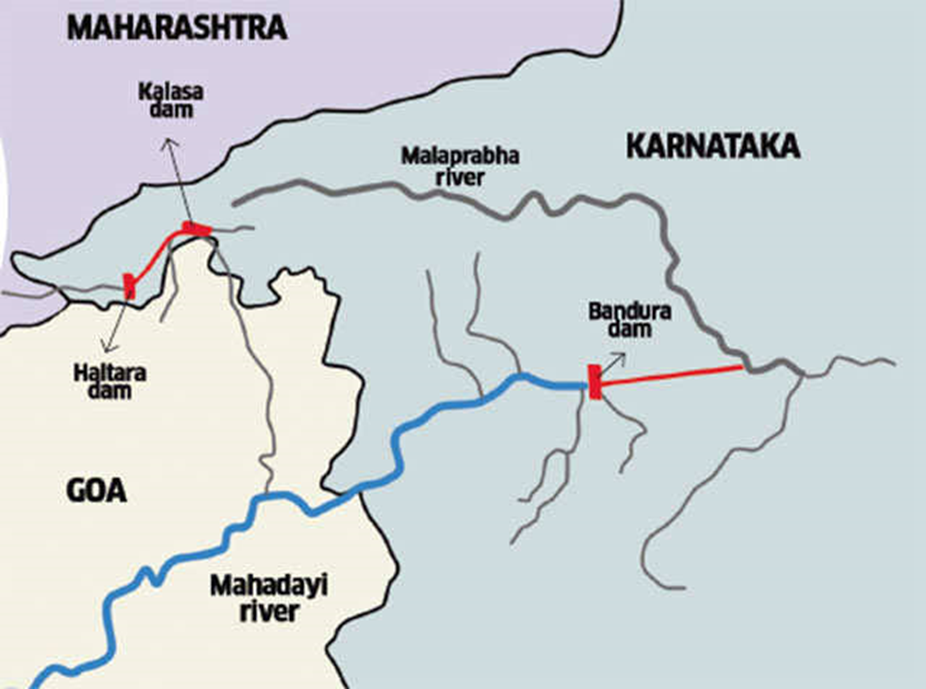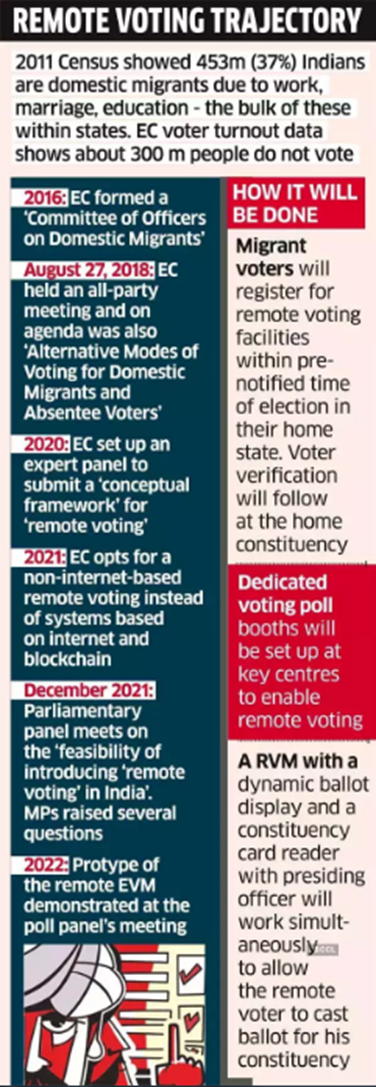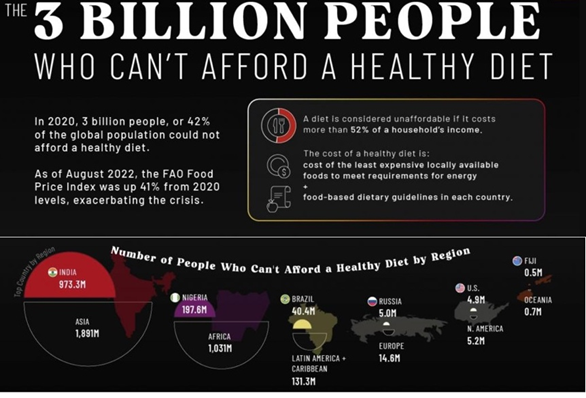Wednesday, 4th January 2023
Free Speech of Ministers - Edukemy Current Affairs
Context:
On January 3, 2023, the Constitution Bench of the Supreme Court ruled that there was no justification for placing "further restrictions" on Ministers' freedom of speech.
- The “reasonable restrictions” on free speech under Article 19 of the Indian Constitution for citizens, including Ministers and public functionaries, were “exhaustive”.
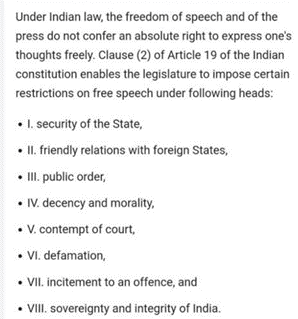
What has the court said?
- The government is not accountable for offensive statements made by the Ministers.
- The principle of collective responsibility cannot be invoked here for making the government accountable.
Dissenting opinion by Justice Nagarathna:
A Minister's statement can be attributed to the government by invoking the principle of collective responsibility, so long as such statement represented the view of the government too, according to Justice Nagarathna, who dissented from the leading judgment on the subject in a separate opinion.
Need of the hour:
- Parliament could enact a legislation or code to restrain citizens in general and public functionaries in particular from making disparaging or vitriolic remarks against fellow citizens.
- Political parties could come up with a code of conduct to regulate and control the actions and speech of their functionaries and members.
Background of the case:
The case emanates from the Bulandshahar rape incident wherein the then Minister of the State of Uttar Pradesh and Samajwadi Party leader, Azam Khan had trivialised the act by dismissing the incident as a 'political conspiracy and nothing else'.
UNSC Reforms - Edukemy Current Affairs
Context:
External Affairs Minister S. Jaishankar on Sunday emphasized upon the need for a 'refresh' of the 77-year-old UNSC structures.
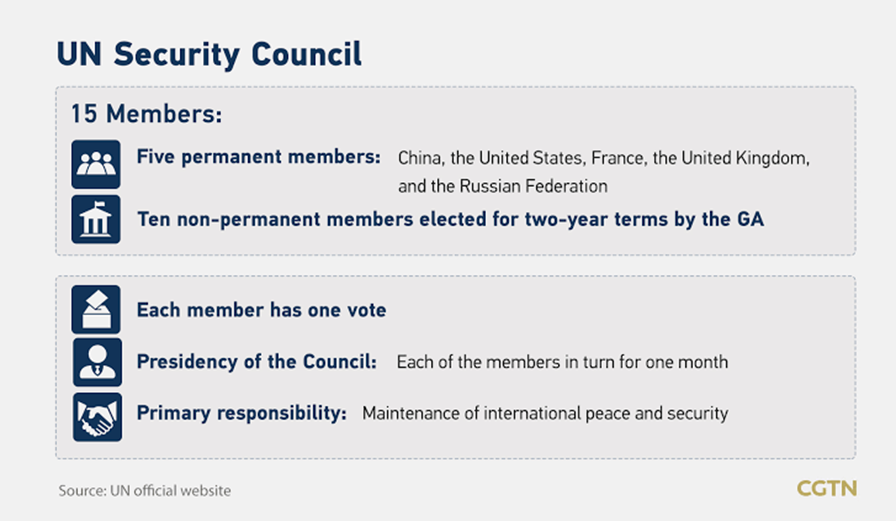
The need for reforms:
A 'large part of the world does not believe anymore that the UN system speaks fairly for them.'
- A host of contentious issues including global terrorism, Ukraine war, COVID pandemic’s origins and so on, have, over the last few years, sufficiently highlighted the need for a multipolar global order.
Present structural and governance challenges:
- Lack of inclusivity and representation in UNSC: The forum’s composition, which still reflects the realities of the 1945 post-World War II era. No African or Latin American country has been given representation.
- Misuse of Veto Power: Oftentimes, the permanent members have been accused of misusing their veto to suit their national agendas at the detriment of global security. For instance, Russia vetoed many resolutions condemning its actions in Ukraine.
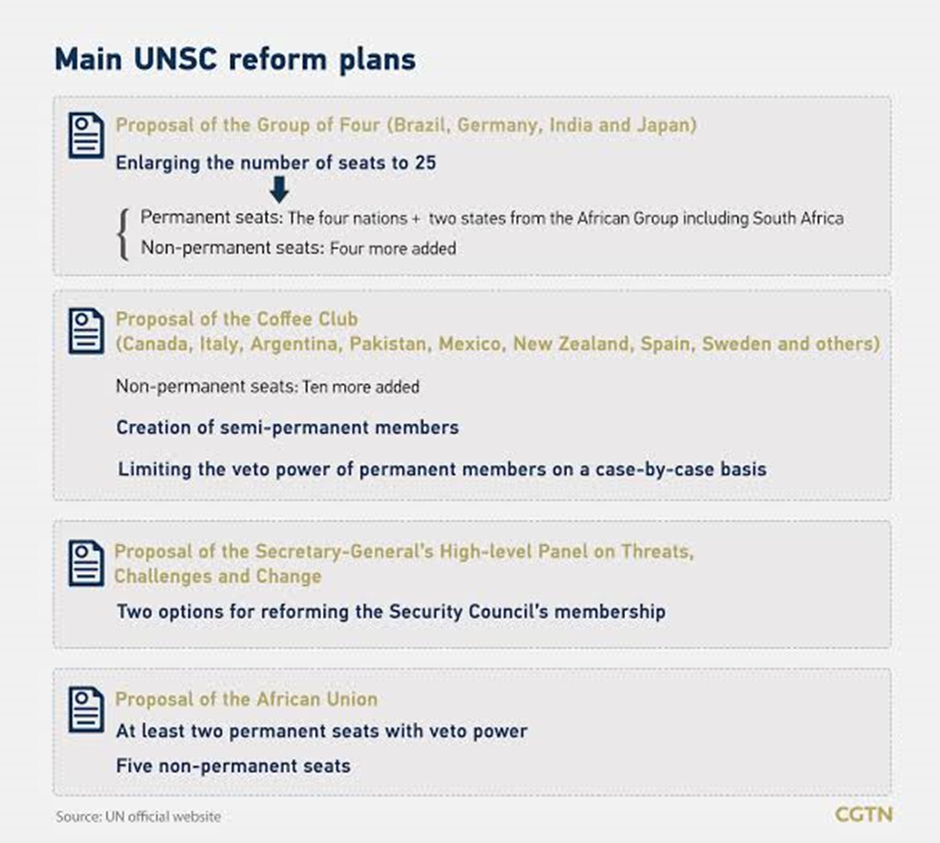
Case for Permanent Membership of India in UNSC:
- India is the founding member of the UN.
- India has almost twice the number of peacekeepers deployed on the ground than by P5 countries.
- India is also the largest democracy and second-most populous country.
- India’s acquired status of a Nuclear Weapons State (NWS) in May 1998 also makes India a natural claimant as a permanent member similar to the existing permanent members who are all Nuclear Weapon States.
- India is the undisputed leader of the Third world countries, as reflected by its leadership role in Non-Aligned Movement and G-77 grouping.
- India is among the world’s fastest growing economies and is the third largest globally in purchasing power parity (PPP) terms.
Arguments by few countries against providing India a permanent seat:
- India’s fund contributions to the organization stand at $29.9 million, which is significantly lower of the contributions made by the P5 or even Germany, which contributed $175 million.
- India is still heavily reliant on military imports from the US and Russia and is yet to display its military might beyond the Indo-Pacific.
- Despite economic growth, India continues to perform poorly on human development indicators and is even behind its immediate neighbors, which are smaller economies, in the Human Development Index.
- Poor performance on socio-economic and other relevant indicators including press freedom, happiness index etc.
Jain community protests - Edukemy Current Affairs
Context:
Members of the Jain community have been staging protests in several parts of the country for the past two weeks over demands related to two holy sites:
- Sammed Shikhar on Parasnath hill in Jharkhand and
- Shetrunjay hill in Palitana of Gujarat.
What is the issue?
In Jharkhand, the issue is about Parasnath hill being declared a tourist spot and an eco-sensitive zone, while in Gujarat, the row is over the vandalising of a shrine and related security concerns.
Sammed Shikhar:
- Sammed Shikharji, located at Parasnath Hills in Jharkhand is a sacred pilgrimage site for the Jains. It is considered among the most important Jain pilgrimage sites, where 20 of the 24 Jain Tirthankars are believed to have attained salvation.
- Parasnath Hill is the highest mountain in the state of Jharkhand.
- The Jnatrdharmakatha, one of the twelve fundamental texts of Jainism, has the first mention of Shikharji as a tirth (place of pilgrimage).
- The Parsvanathacarita, a biography of Prva written in the eleventh century, also makes mention of Shikharji.
- An illustration of Parshavanatha’s nirvana at Shikharji can be seen in a palm-leaf manuscript of the Kalpa Stra and Kalakacaryakatha from the thirteenth century CE.
- Both Digambara and Svetambara regard Shikharji as the most significant pilgrimage site.
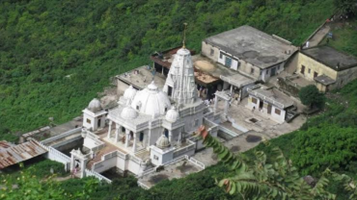

Protesters' concerns:
- Neither the Centre nor the state consulted the main stakeholder, the people from the Jain community, while declaring the hill an eco-sensitive zone and a tourist spot.
- Declaring the hill as an eco-sensitive zone is also a problem, as locals will be given employment through poultry farms etc., at the holy site.
Adinath Dada’s Pagla vandalized in Gujarat:
- The Pagla was a marble carving representing the feet of Lord Adinath, the first Jain Tirthankar.
- The pagla is housed in a small shrine in Rohishala village near the Shetrunjay hill, considered holy by the Jains.
- The Jains are demanding that Shetrunjay hill and the area around it be protected so as to maintain its holiness. They also want further probe in the vandalism case.
Satyendra Nath Bose - Edukemy Current Affairs
Context:
129th birth anniversary of Satyendra Nath Bose was observed on January 1, 2023.
- Born on January 1, 1894, Bose collaborated with Einstein to develop what we now know as the Bose-Einstein statistics.
- Bose-Einstein statistics predicted that at very low temperature near absolute zero, all particles will condense into a single state, called Boson.
- Today, in honour of his legacy, any particle that obeys the Bose-Einstein statistics is called a boson.
Significance of “Bose-Einstein Statistics”:
It revolutionized the field of Physics in two ways:
- Improved the Standard Model of Particle Physics.
- Paved way for discovery of ‘God Particle’ & helped Peter Higgs won a Nobel.
Other Key points:
- Satyendra Nath Bose is known for his work in Quantum Physics.
- He is famous for “Bose-Einstein Theory” and a kind of particle in atom has been named after his name as Boson.
- In 1929 Satyendra Nath Bose was elected chairman of the Physics of the Indian Science Congress and in 1944 elected full chairman of the Congress.
- Honored with ‘Padmabhusan’ by the Indian Government in recognition of his outstanding achievement.
Prajwala Challenge - Edukemy Current Affairs
Context:
The Deendayal Antyodaya Yojana-National Rural Livelihood Mission (DAY-NRLM) has launched the Prajjwala Challenge.
Objective: To invite ideas, solutions, and actions that can transform rural development.
The Challenge seeks to search for ideas and solutions around:
- Innovative Technology Solutions.
- Inclusive Growth.
- Value Chain Interventions.
- Enhanced Women Entrepreneurship.
- Cost-effective Solutions.
- Sustainability.
- Place-based employment.
- Localised models etc.
DAY-NRLM:
- It is one of the flagship poverty alleviation programs of the Ministry of Rural Development, which aims at creating efficient and effective institutional platforms for the rural poor.
- It enables them to increase household income through sustainable livelihood enhancement and improved access to financial services.
Coffee Club - Edukemy Current Affairs
A group of 12 countries in 1995 formed the Uniting for Consensus, dubbed as the Coffee Club, to jointly oppose the expansion of UNSC, which they contend will dilute the power.
- These include Italy, Spain, Malta, San Marino, Pakistan, South Korea, Canada, Mexico, Argentina, Colombia, Costa Rica & Turkey.
- Under the direction of Italy, it seeks to oppose the applications for permanent members put out by the G4 countries (Brazil, Germany, India, and Japan).
- It contends that an increase in permanent seats will exacerbate the inequality among the member nations and lead to the cascading expansion of several privileges.

Yo-Yo test - Edukemy Current Affairs
Context:
The BCCI recently reintroduced the Yo-Yo Test, which first came to the fore under Virat Kohli's captaincy. In the wake of the recent performances of the Indian team, the Yo-Yo Test has been made mandatory again.
What is it?
- The Yo-Yo Test is a 2-km time circuit routine, which is designed to test the speed and endurance of an athlete.
- The Indian team will be made to go through the Test from time to time. The activity requires players to run between two cones or markers, which are placed 20m apart, at an increasing speed.
It must be noted that given the nature of the Test, it is slightly difficult for fast bowlers as compared to other players.
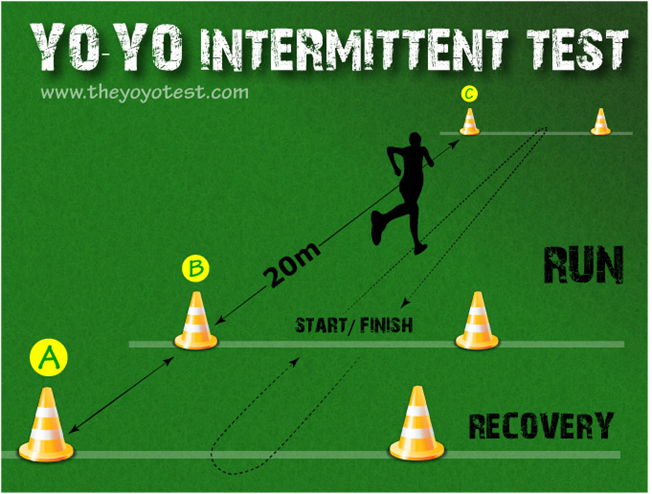
Dexa scan - Edukemy Current Affairs
Context:
Dexa, also known as a dual-energy X-ray absorptiometry scan, is a type of medical imaging test that uses X-ray technology to measure the mineral content and bone strength of players.
Why is it required?
Any type of sport — be it cricket, football, or hockey — results in more wear and tear of bones and joints of players due to increased movements in practice sessions.
What happens in such a scan?
Osteoporosis cannot be assessed on clinical history or examinations alone.
- It has to be checked on x- rays and Dexa scan. But Dexa scans are more specific and sensitive then x-rays.
- The test generally focuses on two areas of the body: the hip and the spine, and in some cases the forearm, which are most susceptible to getting a fracture in the body.
- According to The World Health Organization’s cut off value, while normal value is between 1- (-1); -1 to -2.5 is osteopenia; and less then -2.5 is osteoporosis. In Osteoporosis, chances of fractures are high.
How does the test help?
The test, being quick and painless, is easy and can help in diagnosing osteoporosis (or decrease in bone mineral density) that is responsible for weakening the bones overtime, making them susceptible to getting fractured.

Remote Electronic Voting Machine
Context:
The election Commission of India (ECI) has developed a prototype for the Remote Electronic Voting Machine (RVM).
- It is aimed to facilitate voting for domestic migrants across India.
What are RVMs?
- RVMs were developed by Bharat Electronics Limited (BEL) and the Electronics Corporation of India Limited (ECIL).
- The RVMs are stand-alone, non-networked systems, allowing voters from multiple constituencies to vote using the same machine.
- They will be set up in remote locations outside the state under similar conditions as current polling booths.
- They can be used for up to 72 constituencies simultaneously from a single, remote polling booth.
How RVMs work?
- The special remote polling booths would be set up in different states when elections are on in the home state of migrants.
- The remote voter will have to pre-register for the facility by applying online or offline with the Returning Officer of the home constituency.
- The special polling stations would then be set up in the places of current residence of the remote voters.

GNB1 Encephalopathy - Edukemy Current Affairs
Context:
It is a rare genetic brain disease. Researchers are trying to develop a drug to treat it effectively.
- It is a neurological disorder which affects individuals in the foetus stage.
- It is caused due to mutations in the GNB1 gene. A single nucleotide mutation in the GNB1 gene that makes one of the G-proteins, the "Gβ1 protein," causes this disease.
- This genetic disorder affects individuals in the foetus stage.
- Earliest symptoms include delayed physical and mental development, intellectual disabilities, epilepsy (abnormal brain activity), movement problems and frequent epileptic seizures.
Bauxite Mining - Edukemy Current Affairs
- Context: Recently Maliparbat bauxite mining lease case witnessed resistance from the tribals of Odisha.

- Bauxite is basically an aluminous rock that contains hydrated aluminium oxide as main constituent and iron oxide, silica & titania as minor constituents present in varying proportions.
- The deposits of Bauxite mainly occur as capping on hills and plateaus (except coastal Gujarat and Goa), and their deposits are associated with laterites in Peninsular India.
- The principal uses of bauxite are multipurpose covering metallurgy, chemical industries, as raw material in building and road aggregates.
- Bauxite is also used in chemical industry, refractory brocks, abrasive, cement, steel, petroleum and building material.
- The calcined bauxite is used as an anti-skid road aggregate which is used in selected areas to prevent road accidents.
- Indian states with largest bauxite reserves: Odisha>Andhra>Gujrat>Jharkhand>Maharashtra
- Countries with largest bauxite mines: Australia>China>Guinea> Brazil>India
- Bauxite is not a mineral; it is a rock.
Source:
https://epaper.thehindu.com/reader
https://www.sciencedirect.com/topics/earth-and-planetary-sciences/bauxite#:~:text=The%20principal%20uses%20of%20bauxite,cement%2C%20steel%2C%20and%20petroleum.
Diabetes - Edukemy Current Affairs
Context: As per NFHS-5, higher awareness of diabetes has a better chance of beating the disease regardless of wealth levels.
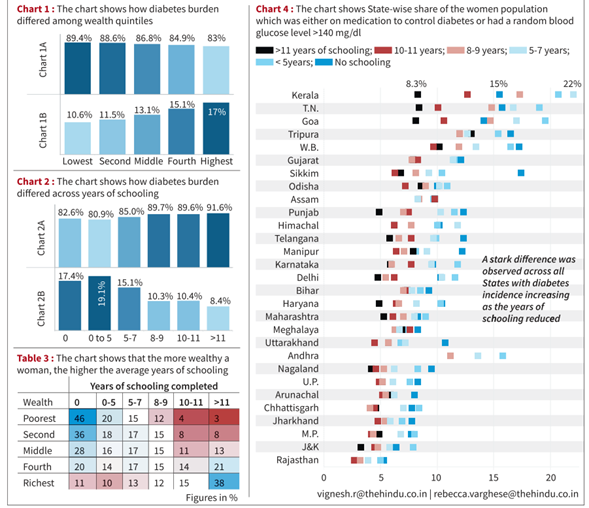
- Diabetes is a non-communicable disease that occurs when blood glucose or sugar, is too high.
- Types of diabetes
-
- Type 1 Diabetes: the body does not make insulin in such case as the immune system attacks and destroys the cells in pancreas. Children and young adults are more prone to it.
- Type 2 Diabetes: the body does not make or use insulin well in such cases. It is found commonly in middle aged and older people.
- Gestational diabetes: it develops in some women when they are pregnant and goes away after child birth. Such women have a greater chance of developing type 2 diabetes later in life.
- Others: monogenic diabetes, which is an inherited form of diabetes, and cystic fibrosis-related diabetes.
- Over time, high blood glucose leads to problems such as heart disease, stroke, kidney disease, eye problems, dental disease, nerve damage and foot problems.
- Government of India Initiatives
-
- NCD Target: to prevent the rise in obesity and diabetes prevalence.
- NPCDCS, 2010: for diagnosis and cost-effective treatment at various levels
Sources:
https://epaper.thehindu.com/reader
https://www.niddk.nih.gov/health-information/diabetes/overview/what-is-diabetes
India’s policy impact challenge: Why it exists and how to meet it
Analysis:
Although inclusion has been a significant component of policy reforms in India, there is still room for their advantages to spread widely across many different Indian demographic segments.
- India’s efforts toward creating shared prosperity must take into account the importance of having an efficient policy implementation architecture.
Policy Reforms in India - an overview:
The country witnessed reforms aimed at invigorating entrepreneurship, streamlining regulatory processes and even re-imagining the education system through the National Education Policy.
- All policies in India have certain overarching goals, such as self-sufficiency, inclusivity in growth and maximizing good governance.
- The policies also cover a range of socioeconomic and legal issues. For example, the Goods and Services Tax (GST), the Jan Dhan-Aadhaar-Mobile (JAM) trinity, and the Make in India drive.
Significance of past policy choices:
A policy implemented in one period has a continuing effect that shapes the terrain for the next phase of reforms. Policy reforms shape outcomes for firms and individuals over time.
Emergence of policies in India:
- In the post-independence period: India pursued economic policies that limited the operation of private businesses to the domestic sphere, regulated labour markets, and nationalized banks.
- After the 1991 reforms: The economy opened its doors to the global market and witnessed a removal of various other barriers on product and service markets.
- The period post-2014 has seen a major push in the spheres of skill enhancement and ease of doing business, along with a further opening up of domestic markets.
Issues in policy making in India:
- Excessive Fragmentation in Thinking and Action.
- Excessive overlap between policy making and implementation.
- Lack of non-governmental inputs and informed debate.
- Lack of systematic analysis and integration prior to policy-making.
Need of the hour:
- For India’s ambitions to come to fruition, we must design a reform agenda with a clear focus on the implementation architecture, especially the interplay of the Union government and states.
- Well informed and enabled implementation in all-of-government mode can help us turn well-meant policies into real benefits.
- There must be a greater focus on how policies play out at the ground level, for which the dialogue between the Centre and states, and even within and among states, warrants attention.
Source: livemint
Rani Velu Nachiyar - Edukemy Current Affairs
Context: PM remembers Rani Velu Nachiyar on her birth anniversary.
Who was Rani Velu Nachiyar?
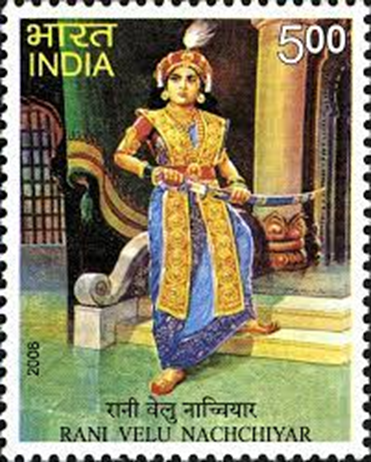
- Rani Velu Nachiyar is the 18th century queen from Sivagangai district in Tamil Nadu, who fought against the British rule to recapture her kingdom.
- She was known as the first queen to fight against the colonial power during that time.
Her bravery:
- During her stay in Dindugal, Velu Nachiyar formed an alliance with other kingdoms and plotted her revenge against the British.
- Following a strong fight, Velu Nachiyar was successful in recapturing her kingdom and hence becoming the queen of Sivagangai again.
- During her reign, the queen also formed a women's only army called Udaiyaal.
- For more than 10 years, Velu Nachiyar proudly ruled Sivagangai before she died in 1796 of an illness.
Savitribai Phule: Trailblazing Social Reformer
Context: The PM has paid tributes to Savitribai Phule on her Jayanti on 3 January.
 Who was she?
Who was she?
- “Savitri Bai Phule, born on 3 January 1831 at Naigaon in Maharashtra’s Satara district, was the social reformer of the 19th century who worked in the field of women education”.
- Phule opened a school for girls along with her husband, social reformer Jyotirao Phule.
- Savitribai Phule is widely regarded as one of India’s first-generation modern feminists for her significant contributions in ensuring equal education opportunities under the British raj.
- ‘In her honour, University of Pune was renamed Savitribai Phule University in 2014.’
Major contribution of Savitribai Phule
- Savitribai Phule opened a school for women in 1848. It was the country’s first school for women started by Indians. She faced vehemently opposition by the orthodox sections of society in Pune.
- With her husband, social reformer Jyotirao Phule, she worked against discrimination based on caste-based identity.
- In 1852, Savitribai Phule started the Mahila Seva Mandal to raise awareness about women’s rights.
- She established a shelter for widows in 1854 which she further built on in 1864 to also accommodate destitute women and child brides cast aside by their families.
- Savitribai Phule also played a pivotal role in directing the work of the Satyashodhak Samaj.
- Savitribai opened a clinic in 1897 for victims of the bubonic plague that spread across Maharashtra just before the turn of the century.
- She also set up “Balhatya Pratibandhak Griha”.
|
Satya Shodhak Samaj
|
Pravasi Bharatiya Samman - Edukemy Current Affairs
Context: U.S.-based billionaire Darshan Singh Dhaliwal has been honoured with the Pravasi Bharatiya Samman Award (PBSA).
- Dhaliwal’s name features in a list of 27 awardees that includes Israel-based restaurateur Reena Pushkarna and CEO of Fedex Raj Subramaniam.
- In October, 2021 he was denied entry into India because of his support to the 2020-21 farmers’ protest.
|
Pravasi Bharatiya Samman:
|
'RISE- Rising India Through Spiritual Empowerment'
Context: Recently, a national campaign on 'RISE-Rising India through Spiritual Empowerment' was organized by Brahma Kumaris at Mount Abu, Rajasthan.
What is it?
RISE is a step towards spiritual empowerment of Indian nationals through which the dream of Golden India will be fulfilled.
Brahma Kumaris:
- Brahma Kumaris, officially known as ‘Prajapita Brahma Kumaris Ishwariya Vishwa Vidyalaya’ is a worldwide spiritual movement dedicated to personal transformation and world renewal.
- It was founded in 1936 in Hyderabad, Sindh (then a part of undivided India) by Prajapita Brahma.
- It is working as an international NGO, associated with the United Nations Department of Public Relations.
Siyom Bridge - Edukemy Current Affairs
Context:
Siyom bridge was recently inaugurated in Arunachal Pradesh.
- It is the state-of-the-art 100-meter long bridge over Siyom River in Arunachal Pradesh (The Siyom river is a tributary of the Brahmaputra).
- The Bridge has a great Strategic Significance to tackle China as it is a gateway to sensitive areas of LAC in Arunachal Pradesh.
Haldwani, Uttarakhand: 4K+ Families Face Homelessness
Context:
Thousands of people in Uttarakhand's Haldwani have taken to the streets in a bid to protect their homes after they were served eviction notices based on a high court order.
Background:
Recently, Uttarakhand High Court directed the Railway and the local authorities to remove encroachments after giving a week’s notice to the "occupants".
- Now, more than 4,000 families, of whom the majority are Muslims, face the threat of being removed from their homes.
- After an eviction notice was served, thousands of people have taken to the streets in Uttarakhand’s Haldwani in an effort to protect their homes.
- A petition has been filed in the Supreme Court against the high court order.
Protesters’ Arguments:
- They have been living in the area for 70 years. There is a mosque, temple, overhead water tank, a PHC, a sewer line laid in 1970, two inter-colleges, and a primary school.
- They have argued, How can it be an encroachment when there are three government inter-college in the area?
Relevance in GS Paper 4:
- Ethical concerns and dilemmas in government and private institutions.
- Laws, rules, regulations and conscience as sources of ethical guidance.
- Concept of public service.
Share the article
Edukemy’s Current Affairs Quiz is published with multiple choice questions for UPSC exams
MCQ
Get Latest Updates on Offers, Event dates, and free Mentorship sessions.

Get in touch with our Expert Academic Counsellors 👋
FAQs
UPSC Daily Current Affairs focuses on learning current events on a daily basis. An aspirant needs to study regular and updated information about current events, news, and relevant topics that are important for UPSC aspirants. It covers national and international affairs, government policies, socio-economic issues, science and technology advancements, and more.
UPSC Daily Current Affairs provides aspirants with a concise and comprehensive overview of the latest happenings and developments across various fields. It helps aspirants stay updated with current affairs and provides them with valuable insights and analysis, which are essential for answering questions in the UPSC examinations. It enhances their knowledge, analytical skills, and ability to connect current affairs with the UPSC syllabus.
UPSC Daily Current Affairs covers a wide range of topics, including politics, economics, science and technology, environment, social issues, governance, international relations, and more. It offers news summaries, in-depth analyses, editorials, opinion pieces, and relevant study materials. It also provides practice questions and quizzes to help aspirants test their understanding of current affairs.
Edukemy's UPSC Daily Current Affairs can be accessed through:
- UPSC Daily Current Affairs can be accessed through Current Affairs tab at the top of the Main Page of Edukemy.
- Edukemy Mobile app: The Daily Current Affairs can also be access through Edukemy Mobile App.
- Social media: Follow Edukemy’s official social media accounts or pages that provide UPSC Daily Current Affairs updates, including Facebook, Twitter, or Telegram channels.

